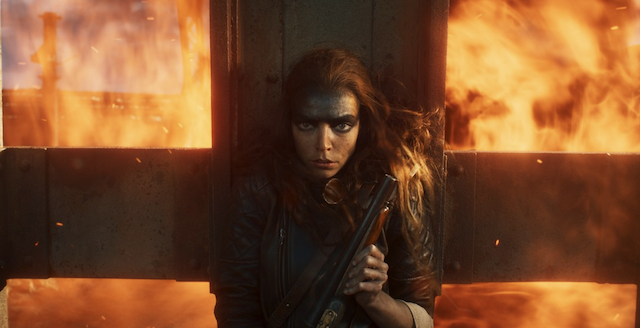
@Courtesy of Warner Bros.
Furiosa:A Mad Max Saga : Snatched from the Green Place of Many Mothers, young Furiosa(Anna Taylor-Joy) falls into the hands of a great biker horde led by the warlord Dementus(Chris Hemsworth). Sweeping through the Wasteland, they come across the Citadel, presided over by the Immortan Joe. As the two tyrants fight for dominance, Furiosa soon finds herself in a nonstop battle to make her way home.
Director:George Miller
Producer:Doug Mitchell, George Miller
Screenwriter : Geroge Miller, Nick Lathouris
Distributor : Warner Bros. Pictures
Production Co : Warner Bros. Pictures, Kennedy Miller Mitchell
Rating : R (Sequences of Strong Violence|Grisly Images)
Genre : Action, Adventure, Sci-Fi
Original Language : English
Release Date (Theaters) : May 24, 2024, Wide
Runtime : 2h 28m
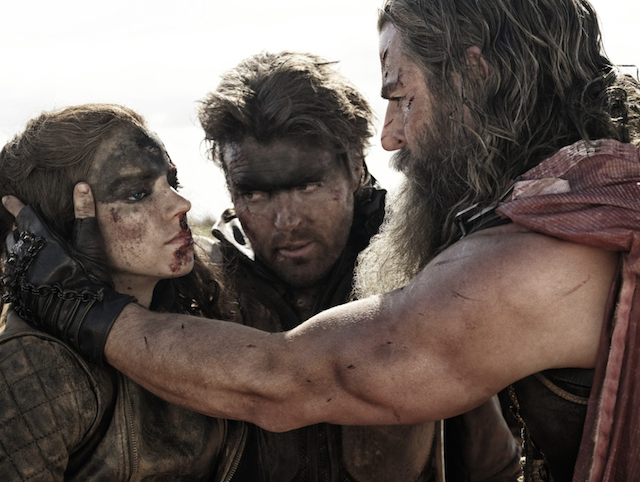
@Courtesy of Warner Bros.
Press Conference with Director George Miller
Q : What do you think makes Furiosa and the Mad Max universe resonate with people almost ten years after Fury Road?
George Miller: It comes down to telling some kind of stories, basically allegories. It’s the same way with American Western. This is the way mythologies and religious stories are built. They talk to you wherever you are, in time and space. You’re responding to things in the story that have a meaning to you. Both Furiosa and Fury Road tend to be more than what meets the eye.
Q : How did you decide to cast Chris Hemsworth in the role of Dementus?
George Miller: When I saw Chris’s work, I knew nobody else who could play him. For example, we already had in the screenplay the teddy bear but then he made more of it than we originally had. I met Chris, I tortured him, and I saw that he is somebody in a multi-dimensional position, as a human being and the way he approaches acting. I instantly knew it was going to be good, whatever it was going to happen, it would have been interesting.
Dementus is a showman across the wasteland with a great horde, similar to the Romans or Genghis Khan. Chris understood immediately which kind of work we were doing. There were times when I was watching his performance and I didn’t know where he got it from. The analogy is with sport: you have great athletes, you prepare them, you guide them through, The preparation is in something different from the moment of performance.
You don’t know what the basketball player is going to do. Same way you don’t know what the actor’s going to do. You basically experience when they surrender to intuition. And let it happen. Stuff comes out and it’s a wonderful thing to see, something you have no real control over.
Q : Can you give us an idea of what he added with the teddy bear that you didn’t see?
George Miller: Well, he saw it as a way of connecting with Furiosa. It was there in the screenplay, but not so deliberately, not the way it played thanks to Chris. The way that he meant to mentor her. In a wacky sort of way as a mentor.
How to survive the wasteland was expressed through this Teddy bear and the things that he said, became just more accurate. Chris’ parents were social workers in Australia, pioneers working with abused children. Chris experienced in his childhood the work that his parents were doing. And he got a lot of wisdom about that for someone so relatively young. And ultimately came into his word. I love that.
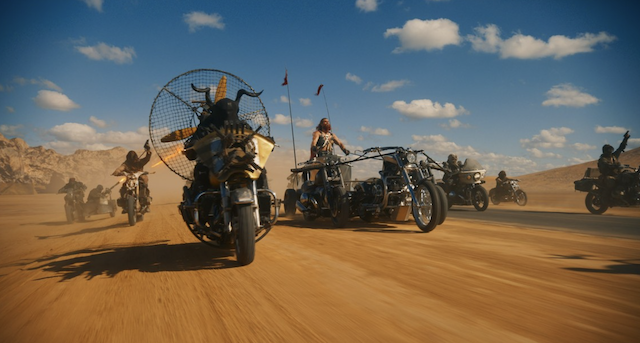
@Courtesy of Warner Bros
Q : What about Anya Taylor-Joy? Furiosa shows a different look for this character that the audience is already familiar with….
George Miller: She had big shoes to fill. I had only seen a few clips of the Witch and before she did The Queen’s Gambit, Edgar Wright showed me an early cut of Last Night in Soho. That’s when I saw her for the first time, there was something very compelling about her. Edgar told me: “She’s got it. Whatever needs to be done she can do it.” I trusted his opinion.
And it proved to be right. It’s a difficult role for a classic sort of character, particularly in the Westerns. You could argue Mad Max is a western with wheels. The lead character is often quite laconic. Throughout all these stories Max hardly ever says anything. Furiosa. in Fury Road hardly said anything. In this story, she can’t say much because she’ll give away the green place from when she was taken.
And then at a certain point in the story, she is pretending to be a male. And we are also in the wasteland, where you interact by action. There’s a timelessness to Anya, something about her face. Through her eyes, you can always see there’s a lot of stuff rolling inside, it becomes apparent without having to work hard to make it obvious. I find it pretty interesting to work with these characters.
Q : You obtained your first degree in medicine. How has your medical background helped you with filmmaking in general, but particularly within the Mad Max universe?
George Miller: Well, I’m still making films for the same reason I was first interested in being a doctor when I was a little kid. I was very curious about who we were as human beings. The first thing that you do as a doctor is to take a history exam. First of all, you look at the whole human being and then you narrow it down to the specific pathology.
You also see people in extreme situations. There’s something heroic for example about childbirth, particularly for a woman. You have to work with well-coordinated like-minded teams. Something you have to deal with, knowing exactly what you’re doing every day on set. Trying to find out where to focus everybody’s energy and your road, all those sorts of things.
Q : Can you provide a description of your philosophy on digital effects and your application? Which choices did you make between using digital and being practical?
George Miller: First of all, I must say it’s the story that always draws me. Its rules. Everything else follows. The next thing I’m interested in is the tools of filmmaking. 40 years ago, I started in the analog, it was a completely different dispensation than working digitally. The cameras were much clumsier, you didn’t have the agility.
And still, some absolutely wonderful movies have been made in the 130 years that we’ve had cinema, particularly the silent era. Now we can work digitally, and the tools we used to make Furiosa are different from the ones we used for Fury Road, a decade ago. Quite different. Now there’s much more plasticity in the process.
The second thing is where the majority of the eyes and the audience are looking at: whatever they’re seeing, has to be real. As much as possible. A world in which the laws of physics. can’t be defied. No humans or vehicles. In the scene when Chris Hemsworth is riding into the storm, you’ve got wind machines and so on. But you can’t really make a storm, it would be ridiculous and it wouldn’t work. So everything else you see in the peripheral vision should be digital.
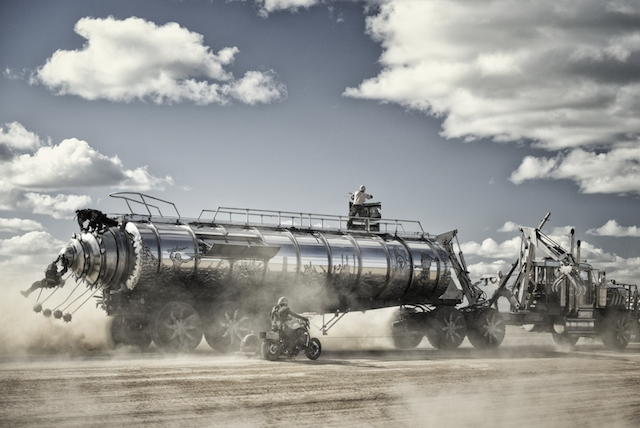
@Courtesy of Warner Bros
Q : What was it like to shoot this film in Australia, specifically in the desert? What obstacles did you encounter while executing in the field?
George Miller: It was great to shoot in Australia because Fury Road, which was always intended to be shot in Australia, was ranked out. We had to go to the west coast of Africa. This time we were able to shoot in Australia and modify those locations. Furiosa takes place 45 to 50 years after the collapse of humankind, there’s this climate catastrophe.
And the semi-arid desert in Australia had to be turned into a desert. It’s a big logistical exercise. The shooting crew is immense, the credits are about 1,200 people. It’s basically a town that you’re moving around, running three or four units. All of that had to be managed a little bit like a military exercise. I was very fortunate to work with really good people who would be doing it for a while.
Q : What does Furiosa say to you about our present? What is your perspective on what is happening in the world today?
George Miller: Even if it is a post-apocalyptic future, the behavior goes back to dark ages or medieval times. With the technology of the 20th century, There are no electric cars, you can’t use your mobile phone, and You can’t use your credit card. It goes back to a war, elemental behavior, It’s allegorical and you could read into it things that might be familiar to you, throughout history. A lot of these behaviors we see somewhere in the world, we see these sorts of things. The way that powerful men deal with each other. This is the thing that attracts me: somehow, when you tell these stories with people dealing with extreme worlds there is conflict. Conflict is the staple of all drama from the earliest time, in all story, and storytelling traditions. What happens when you get into a rising conflict? In stories, it reveals some essence about the characters and the world.
Q :Despite the changes in the moviemaking industry since your beginning, you seem to have the same passion for filmmaking and storytelling, and you are able to keep your vision intact despite the changes. What is your philosophy and what keeps you from doing it again and again?
George Miller: To be honest, I have to say, curiosity. I’ve still got an appetite for it. When I started making movies, I was trying to figure out how to tell stories. Not only how to tell stories but most importantly why we tell stories. What is the function of the story? It Is fundamental to who we are as human beings.
There’s no question about it. It is how our brains work, both individually, and collectively. One of the fortunate things about living in Australia is having the indigenous Australian culture, the longest-living continuous culture.
It is said it’s probably 65,000 years old. I’ve been able to go out In some places in Australia and interact with these people, I’ve got to understand that they are history. Is incredibly powerful. There are places you could go and still practice it in the art, in the narratives of the indigenous Australians.
Telling stories is part of our being human beings: the stories of your community, all the great mythologies and folklores, and all the great religions. We participate in it. All of us. We can’t help it. It’s the way we are. It doesn’t really matter if the mediums always change. Cinema is always changing. And so?
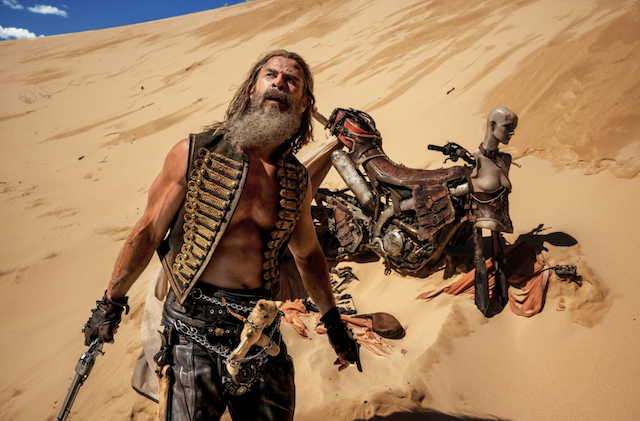
@Courtesy of Warner Bros
Check out more of Adriano’s articles.
Here’s the trailer of the Film.

